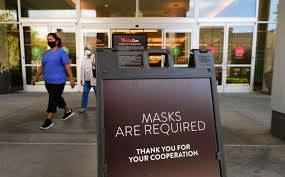By: Bo Tefu, California Black Media
California is taking steps to reopen its economy on June 15. The plans are underway as leaders in public health and local government come up with the next steps in the state’s COVID-19 pandemic recovery.
Efforts to reopen the state are, “driven by the health and science to help nonprofit community organizations and businesses get back on track,” said Dee Dee Myers, director of the Governor’s Office of Business and Economic Development (GO-Biz).
So far, the state has administered 22 million vaccines since it expanded its efforts to immunize everyone in California against COVID-19. A fifth of the vaccine doses were allocated to communities most impacted by the pandemic. According to the California Health and Human Services Agency (CHHS), the number of hospitalizations has declined as testing increases and vaccine eligibility expands.
Now, state officials aim to move beyond the Blueprint for a Safer Economy, a system Gov. Gavin Newsom put in place to reduce the risk of COVID-19 infections and implement updated public health safety measures in all 58 counties. A part of the state’s game plan is to end the Blueprint system provided that businesses and public spaces adhere to ‘common-sense’ public health policies, including the various tiers outlined for outdoor activities.
Dr. Mark Ghaly, secretary of CHHS, said that health equity is a critical piece of the puzzle that will keep the momentum for reopening moving in the right direction.
“We’re still focused on making sure hard-hit communities get vaccines made available to them in convenient ways,” said Dr. Ghaly.
State officials said that the pandemic did not affect California communities equally, even though the state implemented equity metrics for underserved communities. According to the California Healthy Places Index (HPI), 40 percent of COVID-19 cases and deaths occurred in low-income communities.
“We believe that there’s still significant demand for the vaccine, so we’re ensuring that providers in hard-hit communities are the ones that are moving forward,” said Dr. Ghaly.
The state partnered with over 180 community-based organizations and health care centers for community outreach to dispel vaccine hesitancy.
“Californians are still very interested in getting vaccinated, we’re seeing improvements in what some people call vaccine hesitancy as more communities get information and their questions answered, so that they feel confident moving forward with vaccines,” said Dr. Ghaly.
Public health officials will continue to closely monitor the state’s progress by tracking data on vaccine distribution and COVID-19 test results to achieve its goal of reopening in mid-June of this year.
People in California will still be required to wear masks as well as get tested or vaccinated depending on their occupation, as part of the state’s ‘common-sense’ health measures. The state’s long-term plans to get the economy up and running also includes allowing large-scale outdoor events to take place.
Gov. Gavin Newsom said that the state is confident about reopening the economy as people, “continue the practices that got us here.”
“We can now begin planning for our lives post-pandemic,” said Gov. Newsom.
California’s public health agencies say they are committed to tracking and containing new variants as government leaders move forward with plans to reopen the economy, state officials said.
Extension of large-scale pilot vaccine sites
The state recently extended the use of the nation’s first mass vaccination sites at the Oakland Alameda Coliseum and California State University Los Angeles.
The pilot sites operated by the Federal Emergency Management Agency (FEMA) in Oakland and Los Angeles aim to accelerate the state’s goal to safely reopen schools and the economy.
According to data from FEMA and the California Governor’s Office of Emergency Services (Cal OES), both sites have administered more than half a million vaccine doses since they opened in February this year.
In the Bay Area, state officials partnered with Alameda County and Contra Costa County to keep the sites running for vaccine distribution.
Keith Carson, president of the Alameda County Board of Supervisors, said the Oakland Coliseum site has administered more than 100,000 doses to residents in the county.
“Having a mix of large vaccination sites, alongside smaller community sites and mobile pop-ups, is critical for our vaccination infrastructure and meeting our goals for equitable distribution,” said Carson.
The Oakland-based vaccination site is set to operate for an extended period of four weeks. State officials said that the site will deliver approximately 6,000 vaccines on a daily basis.
Diane Burgis, chair of the Contra Costa County Board of Supervisors, said that the partnership, “will provide additional resources for mobile vaccine clinics that can go where we need them most.”
The two counties continue to promote equitable vaccine distribution for local residents seeing that, “many of them are teachers and frontline essential workers from some of our hardest-hit neighborhoods,” said Burgis.
California Black Media’s coverage of COVID-19 is supported by the California Health Care Foundation.






